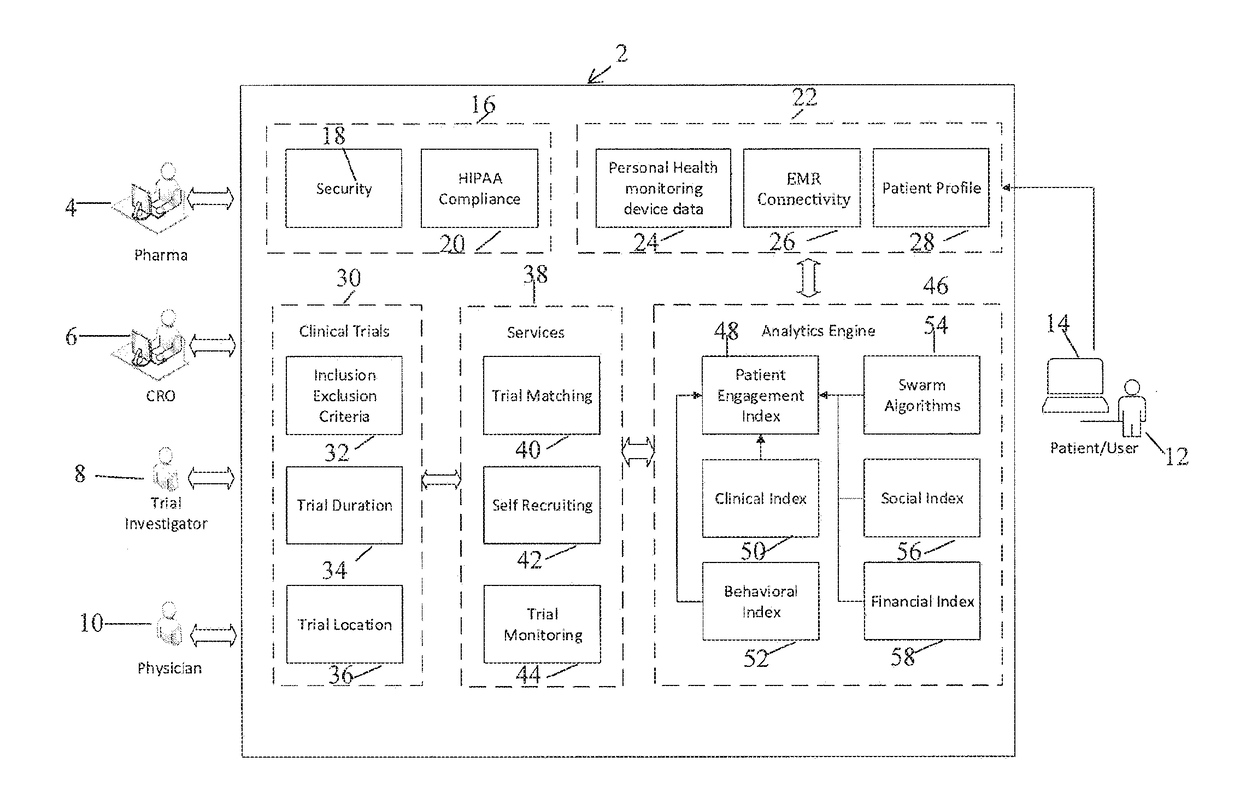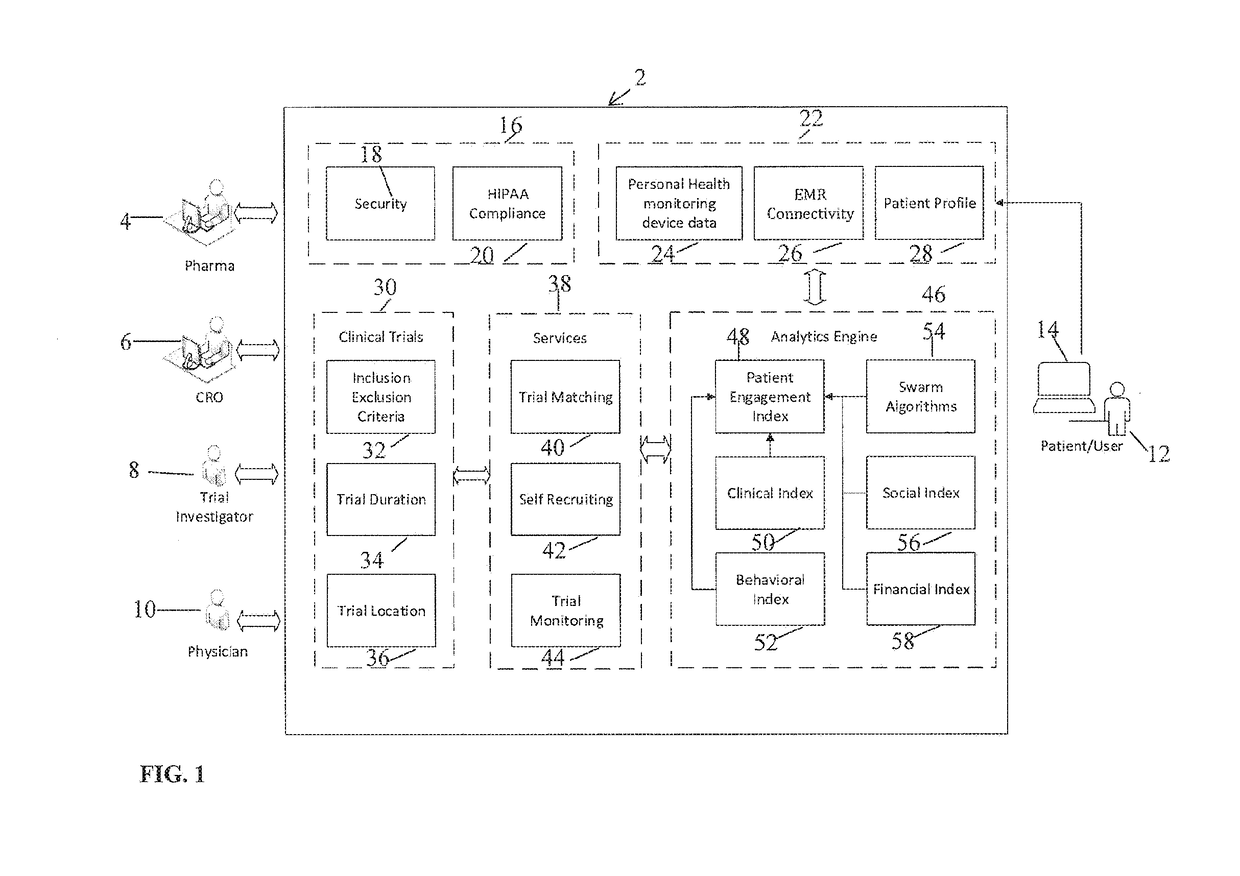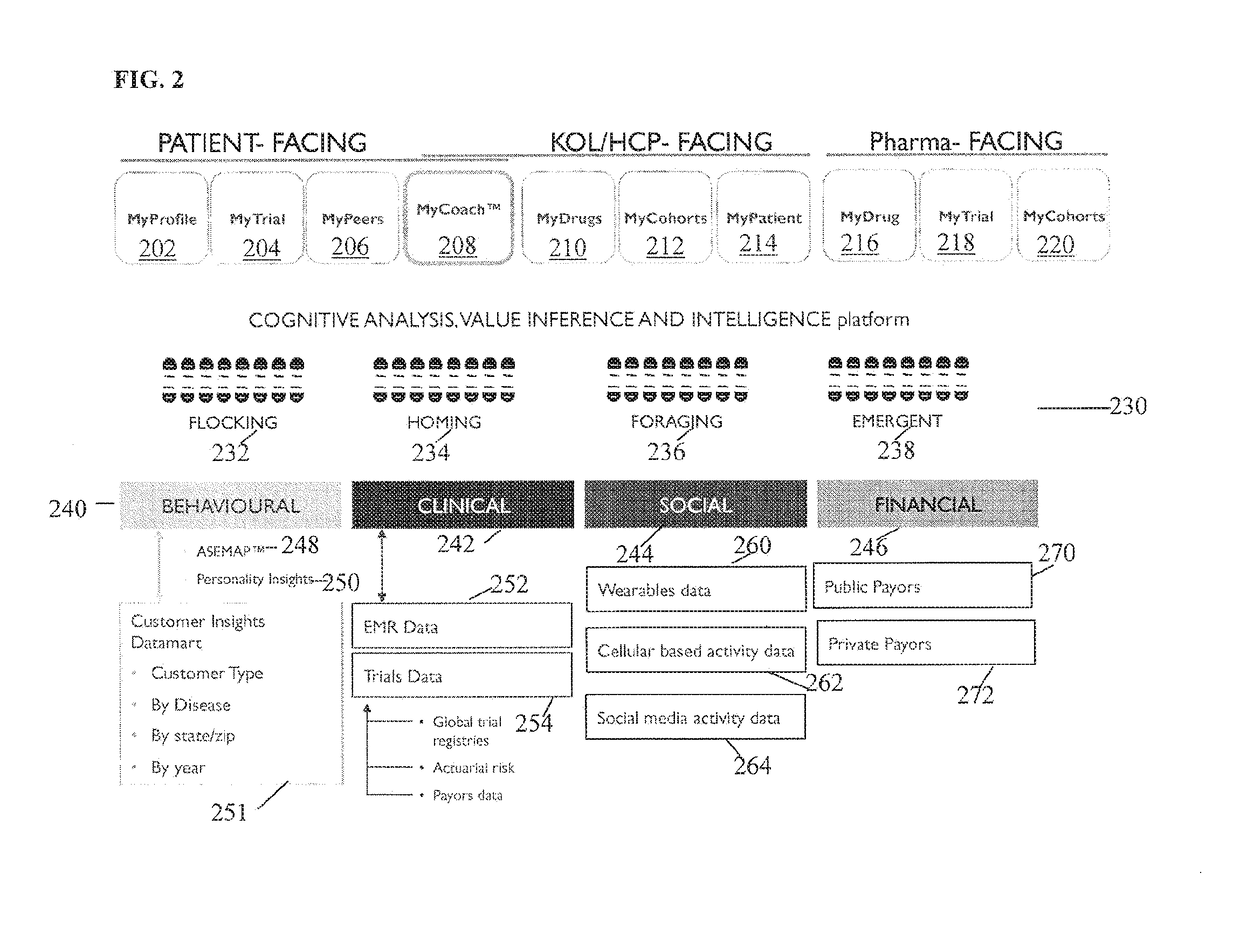Method and apparatus for a virtual clinical trial self-recruitment marketplace for patients based on behavioral stratification, patient engagement and patient management during clinical trials using behavioral analytics, gamification and cognitive techniques
a virtual clinical trial and marketplace technology, applied in the field of global virtual, can solve the problems of 80% of all clinical trials today not meeting their patient recruitment goals, creating significant disruption, etc., and achieve the effect of facilitating patients, eliminating a lot of friction and inefficiency, and better informed decisions
- Summary
- Abstract
- Description
- Claims
- Application Information
AI Technical Summary
Benefits of technology
Problems solved by technology
Method used
Image
Examples
Embodiment Construction
[0074]The present invention is directed to a system and method for predicting patient engagement and targeting better allocation of expensive recruitment resources. However, the present invention may find applicability in other devices / systems, such as engaging in energy saving programs as a customer / consumer of energy, a predisposition to acquire certain goods or services that have a retail value etc.
[0075]Briefly, the preferred embodiments of the present invention provide for Greater market access, proactive patient stratification into disease-specific behaviors that create cohorts ideally suited to be matched up to clinical studies and trials that may be of interest to pharma companies and medical devices. This is significant as only one of ten trials on average finish on time and only 1 in two patients recruited today stay in the trial throughout its duration.
[0076]Advantageous features according to the present invention include:[0077]A system in which optimal candidates likely ...
PUM
 Login to View More
Login to View More Abstract
Description
Claims
Application Information
 Login to View More
Login to View More - R&D
- Intellectual Property
- Life Sciences
- Materials
- Tech Scout
- Unparalleled Data Quality
- Higher Quality Content
- 60% Fewer Hallucinations
Browse by: Latest US Patents, China's latest patents, Technical Efficacy Thesaurus, Application Domain, Technology Topic, Popular Technical Reports.
© 2025 PatSnap. All rights reserved.Legal|Privacy policy|Modern Slavery Act Transparency Statement|Sitemap|About US| Contact US: help@patsnap.com



